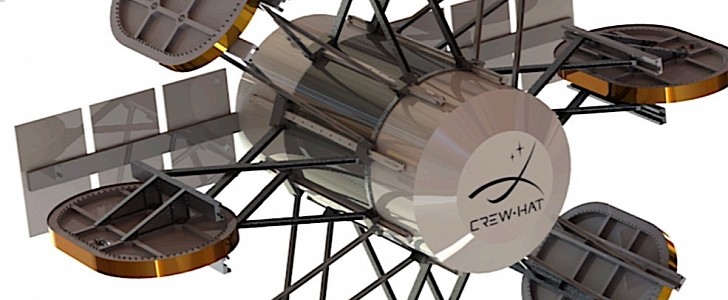Space is a bad place, and it’ll always conspire to kill creatures as frail as we humans are. But that isn’t stopping us from going up there, in a bid to conquer the vast expanse. And to do that, we rely on technology.
One of the biggest dangers for humans going to space is radiation, which bombards pretty much everything floating in the big nothingness. There are ways to go around that, of course, but as we set out to explore much more than our planet’s vicinity, new technologies are needed.
One proposed way to get around cosmic or solar radiation is the use of an electromagnetic field. That’s what protects our planet from the harmful effects of the stuff, and it could be a suitable solution for future spacecraft as well.
At least that’s what University of Wisconsin’s Elena D’Onghia is proposing in a NASA Innovative Advanced Concepts (NIAC) program entry, selected at the beginning of the year by the space agency for a Phase I grant.
Her idea is called CREW HaT, where HaT stands for Halbach Torus, a unique way of arranging permanent magnets to create a magnetic field. In this particular case, we’re talking about “light, deployable, mechanically supported magnetic coils” that are activated by high-temperature superconducting tapes.
When in use, the HaT produces a magnetic field powerful enough to divert cosmic radiation, and, when backed by a suppressed magnetic field in the astronaut’s habitat, should divert “over 50% of the biology-damaging cosmic rays (protons below 1 GeV) and higher energy high-Z ions.”
The figures above show, at least on paper, that the dose of radiation astronauts can absorb when using this tech is “a level that is <5% of the lifetime excess risk of cancer mortality levels established by NASA,” according to the scientist.
The downside is the idea is still in its infancy, and even if successful, it’ll probably be a long time before it comes to fruition.
One proposed way to get around cosmic or solar radiation is the use of an electromagnetic field. That’s what protects our planet from the harmful effects of the stuff, and it could be a suitable solution for future spacecraft as well.
At least that’s what University of Wisconsin’s Elena D’Onghia is proposing in a NASA Innovative Advanced Concepts (NIAC) program entry, selected at the beginning of the year by the space agency for a Phase I grant.
Her idea is called CREW HaT, where HaT stands for Halbach Torus, a unique way of arranging permanent magnets to create a magnetic field. In this particular case, we’re talking about “light, deployable, mechanically supported magnetic coils” that are activated by high-temperature superconducting tapes.
When in use, the HaT produces a magnetic field powerful enough to divert cosmic radiation, and, when backed by a suppressed magnetic field in the astronaut’s habitat, should divert “over 50% of the biology-damaging cosmic rays (protons below 1 GeV) and higher energy high-Z ions.”
The figures above show, at least on paper, that the dose of radiation astronauts can absorb when using this tech is “a level that is <5% of the lifetime excess risk of cancer mortality levels established by NASA,” according to the scientist.
The downside is the idea is still in its infancy, and even if successful, it’ll probably be a long time before it comes to fruition.











